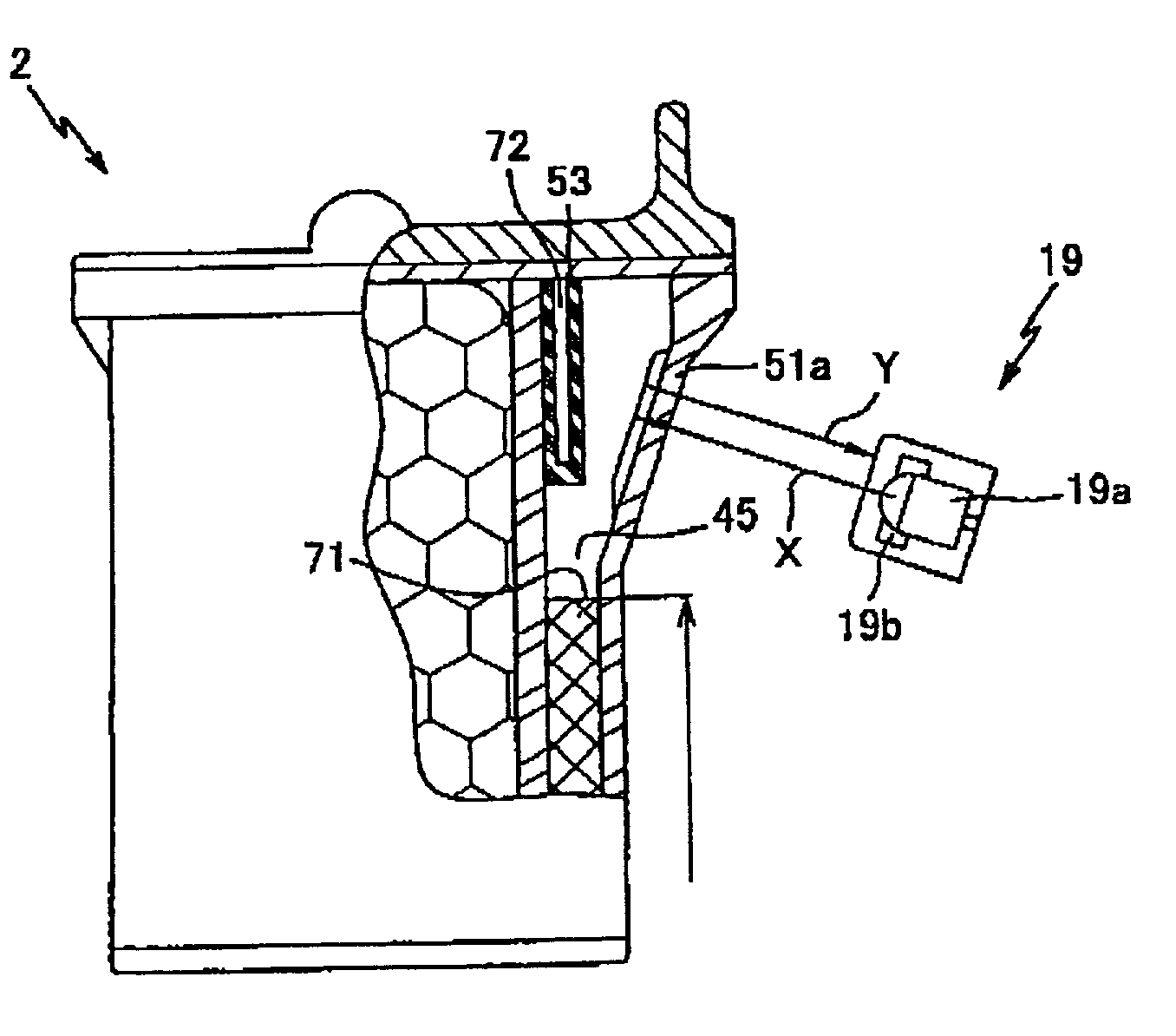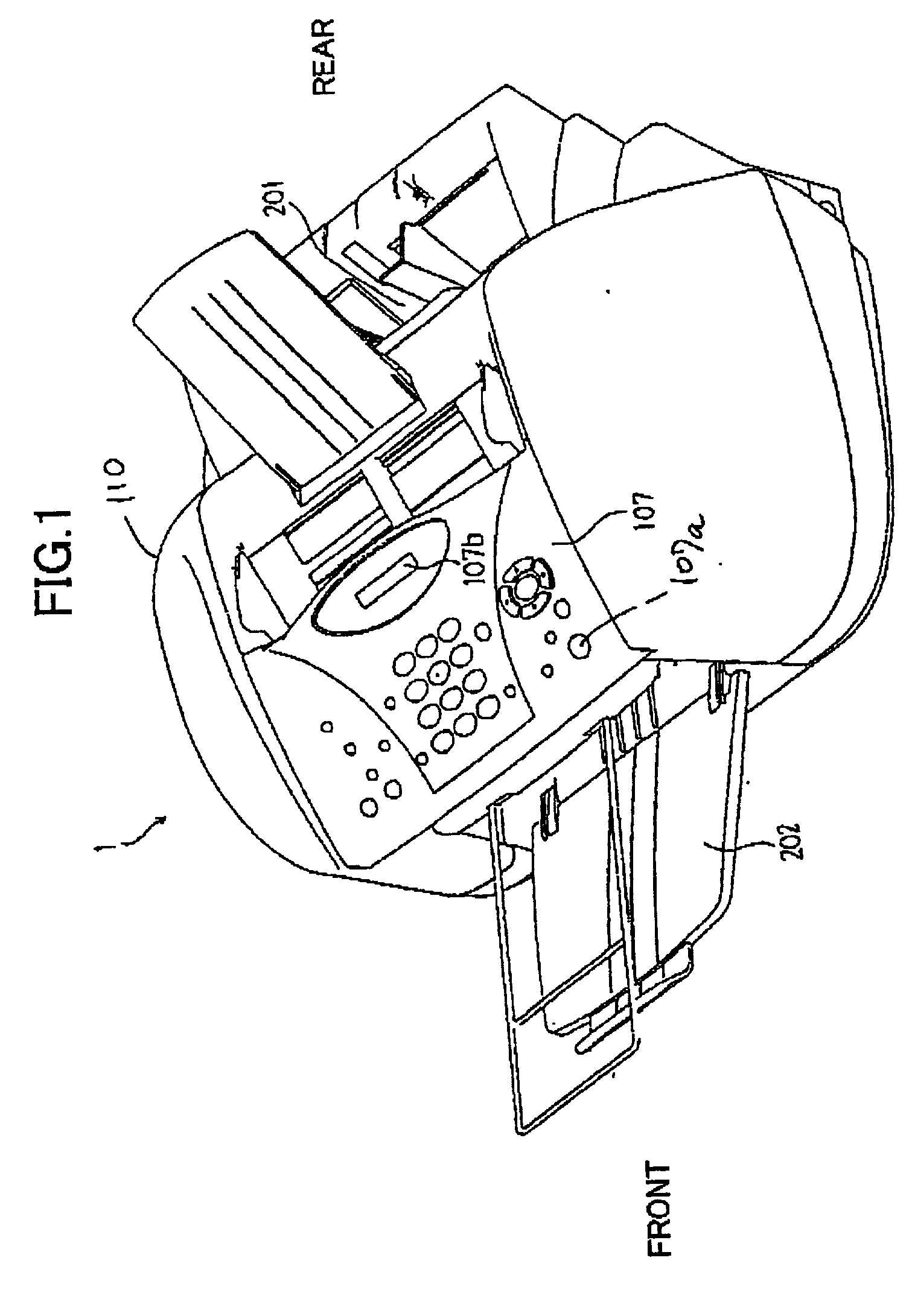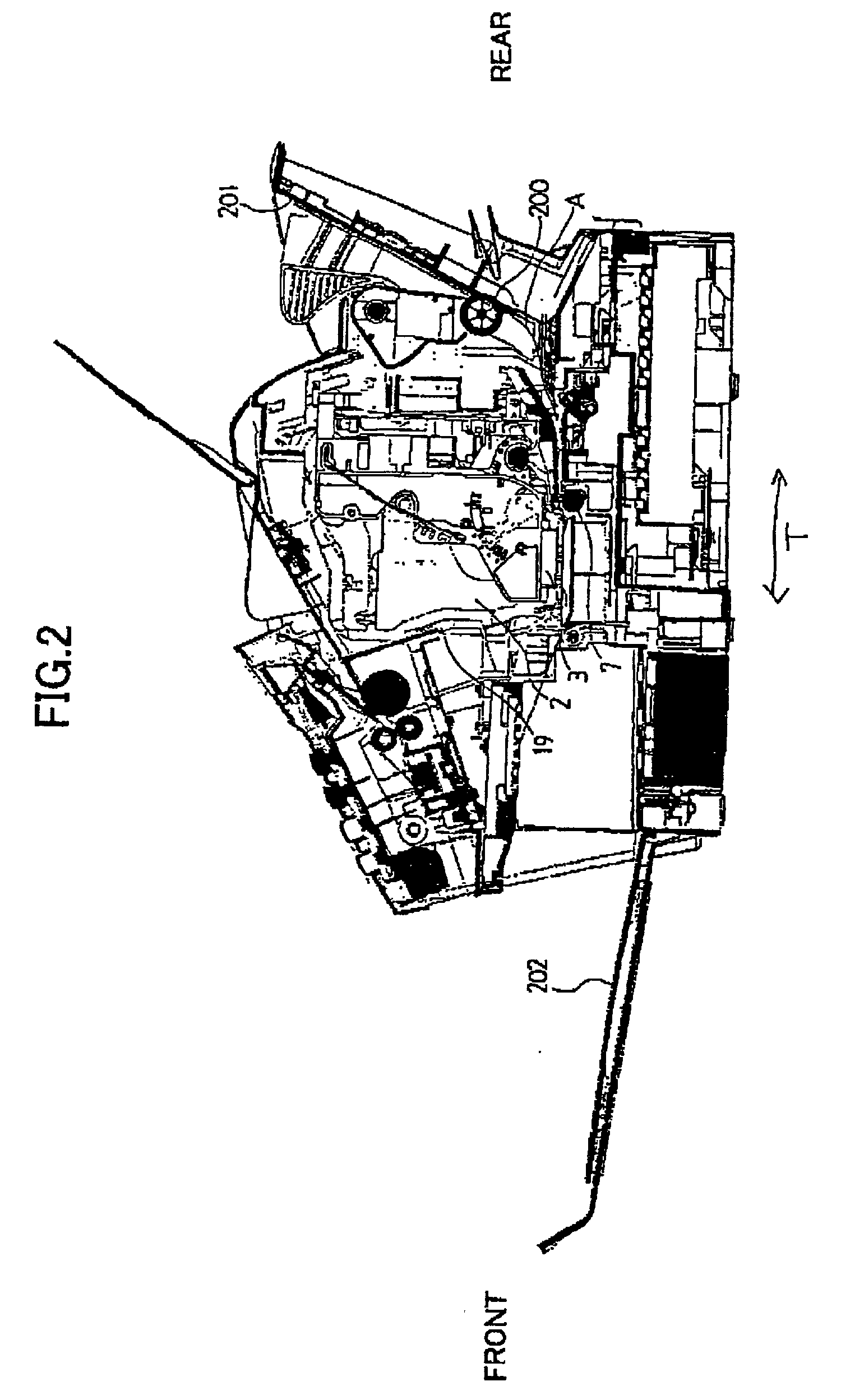Image forming device capable of detecting existence of ink and ink cartridge with high accuracy
a technology of ink and ink cartridges, applied in printing and other directions, can solve the problems of sensor inability to detect, affecting the detection accuracy of ink cartridges, and difficult to slant the optical sensor at the prescribed angl
- Summary
- Abstract
- Description
- Claims
- Application Information
AI Technical Summary
Benefits of technology
Problems solved by technology
Method used
Image
Examples
first embodiment
[0173] As described above, according to the present invention, because the level of light emitted from the infrared light-emitting element 19a has been adjusted using the ink cartridge containing yellow ink, the ink sensor 19 can detect remaining ink with great accuracy, even when the ink sensor 19 has irregularities in sensitivity.
[0174] Since the amount of light reflected by the yellow ink cartridge is the largest, the present invention can still reliably detect remaining ink in the other ink cartridges when the amount of emitted light is adjusted to achieve proper ink detection in the yellow ink cartridge. Therefore, when the printer uses multiple colors of ink, it is possible to apply a single adjustment value to all ink cartridges, thereby simplifying the process and reducing the processing time.
[0175] Moreover, since the level of light emitted from the infrared light-emitting element 19a is adjusted using the yellow ink cartridge 2d containing ink only in the sub ink reservoir...
second embodiment
[0190] described above, the infrared light-absorbing member 131 absorbs infrared light. Therefore, the amount of light reflected from the ink cartridge 130 changes greatly according to whether the ink cartridge 130 contains ink or not. By detecting this difference in amount of reflected light using the ink sensor 19, it is possible to detect with accuracy whether or not ink exists in the ink cartridge 130.
[0191] By providing the sloped portion 51a (prisms 52) and infrared light-absorbing member 131 at the top of the sub ink reservoir 45, the present invention can detect when the ink cartridge 130 is running out of ink in plenty of time before all of the ink 71 is expended.
[0192] In general, any of infrared absorbing members well known in the art that is available can be used as the infrared light-absorbing member 131. The infrared absorbing member can be formed, for example, of V (vanadium), Fe (iron) Cu (copper), Co (cobalt), Ni (nickel), or any combination thereof on a base mater...
PUM
 Login to View More
Login to View More Abstract
Description
Claims
Application Information
 Login to View More
Login to View More - R&D
- Intellectual Property
- Life Sciences
- Materials
- Tech Scout
- Unparalleled Data Quality
- Higher Quality Content
- 60% Fewer Hallucinations
Browse by: Latest US Patents, China's latest patents, Technical Efficacy Thesaurus, Application Domain, Technology Topic, Popular Technical Reports.
© 2025 PatSnap. All rights reserved.Legal|Privacy policy|Modern Slavery Act Transparency Statement|Sitemap|About US| Contact US: help@patsnap.com



